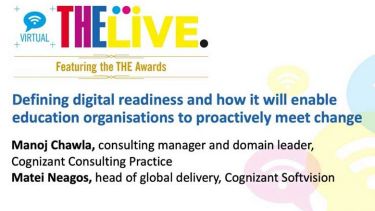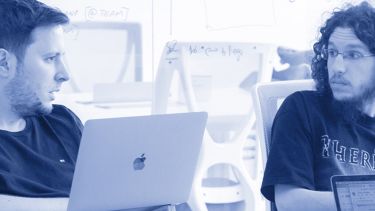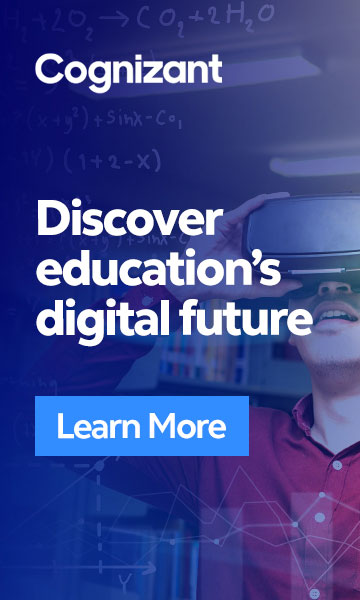Experts advise sector leaders to take a learner-centric approach as the education landscape changes
Since the Covid-19 pandemic hit, education providers have scrambled to meet the changing needs of their staff and students. And while digitalisation has helped to rapidly shift the sector towards remote learning, ensuring assessment practices are reliable in a digital space remains a point of concern for higher education leaders.
According to Manoj Chawla, a consulting manager at Cognizant, educators can find solutions to many such challenges by taking a digital engineering approach to teaching and learning. “The pandemic has given the sector a welcome push in terms of the ways we go about thinking of education,” he explains. “Where once we would talk about assessment of learning, the discourse is now shifting to make assessment part of the experience, not the outcome.”
The increasing demand for microcredentials – that is, the ability to pick up a single skill or short course online – shows that this is not only possible but desirable among consumers, Mr Chawla notes. “The flexibility offered by digitalisation, with technology such as blockchain, makes this easier for higher education institutions to meet,” he says.
“At Cognizant, we believe education is bound by four Ss: space, schedule, supplement (the content) and style of learning. Any of these four aspects can be done physically or digitally,” Mr Chawla explains. “In business, it doesn't matter where we are based or what time it is; our conversations are flexible. Exactly the same is happening through the learning space.”
But unlike in business, he notes, the education sector was “not completely ready with its full digital offerings” when the pandemic hit, with “teaching, as well as assessments, still predominantly taking place in the physical classroom” at the time.
For assessment providers, in particular, revenue “fell off a cliff overnight” as local and national lockdowns prevented exams being held in a traditional setting. As a consequence, both assessment providers and education leaders have been forced to rethink how evaluations can be proctored without face-to-face contact.
“Remote proctoring has its positive and negative aspects, like any technology adoption,” says Mr Chawla. “It’s existed already for a couple of years, but for these reasons, adoption has not been high. Now the needs of assessment have changed, we need to adopt it.”
Here, artificial intelligence (AI) can play a valuable role, Mr Chawla says: “In a proctoring set-up over a video call, for example, the technology will look at my face and make sure it’s the same person who is taking the exam. It will take into account my eye movements, hand movements – everything can be monitored through the camera.”
Whereas one human exam invigilator can only reliably watch one student’s face at a time, AI can be set up to monitor every participant’s movements with information given about their individual needs. But there is still room for improvement, says Mr Chawla: “With practical assessment, for example, AI must be tuned to take into account peoples’ differences; it must be fair for a person whether they are sitting in the UK or China.
“Not everyone will speak in the same pitch or have similar hand gestures, so that's where we need to expand the technology. We are not saying we have reached that level of sophistication – but it is possible.”
Mr Chawla believes that improved guidelines for online assessment could help with the transition. “The implementation of GDPR has set a standard for data regulation. We look to government now to set boundaries for us. If they can regulate it, industry will know the rules we are working within,” he says.
A key part of Cognizant’s work with the education sector is to assist providers in drawing up their own digital road maps for navigating the anticipated challenges. A major focus of this is helping institutions transition towards blended learning, says Mr Chawla. “For this, we place great emphasis on learner-centricity,” he explains. “We want to help our clients understand that in the digital space, it matters more what the learner is interested in – because they are the customer.
“So far, the system has been centred around schooling or certification, and that was correct to a point. But now we are moving more into the digital space, we can really shape learning and assessments towards the learner – we are talking about hyper-personalisation.”
Mr Chawla concludes: “Digital and blended learning is here to stay, that much is clear. Now that resistance to it has been broken down, it is only going to grow and improve.”
Find out more about Cognizant and higher education.









